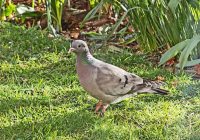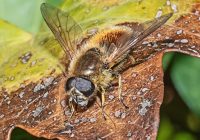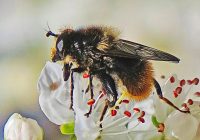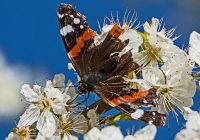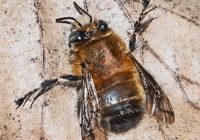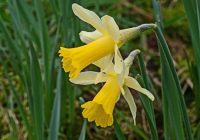Dr Phil Smith’s Wildlife Notes
March 2023
According to the Met Office, England had the wettest March since 1981. My diary shows that there was rain in Formby on 20 days but mostly in small quantities. Indeed, Met Office maps shows Sefton had just over the expected rainfall, the wetter areas being further south. Temperatures were about average but the month was duller than usual. A short cold snap around 10th even produced about an inch of snow; a rare event in Formby these days. The Met office reminds us that improved water-levels “follow on the heels of a very dry February, so there is a need to remain vigilant, especially in areas that have not recovered from the drought last year.”
Dull, often damp weather meant I was out and about less than usual but, to compensate, there was plenty going on indoors. A three-day ‘online’ conference organised by Dynamic Dunescapes celebrated their work to improve the conservation status of nine coastal sand-dune areas in England and Wales, including the Sefton Coast. It was instructive to hear how other places rejuvenate dunelands, introduce novel grazing systems and control invasive plants. The long awaited Plant Atlas 2020 arrived from the Botanical Society of Britain & Ireland in two enormous volumes that I could barely lift! I started to trawl through it for plants mapped for the Sefton Coast that are missing from my Inventory. I also finished my paper on Variegated Horsetail, submitting it for publication in British & Irish Botany. Finally, after another long gestation period, my book on Insects of the Sefton Coast was published by the Lancashire and Cheshire Fauna Society. LCFS members receive a free copy; otherwise, it is available from the Natural History Book Service (NHBS).
While waiting for the rain to stop, I enjoyed watching garden birds from my armchair. Some species have greatly declined over the years while others have increased. I still have a few House Sparrows and Starlings with the occasional Song Thrush, while Robins, Blackbirds and Dunnocks are ever present. But finches have completely gone, replaced by lumbering Wood Pigeons and, recently, Magpies. The most unexpected visitors were a wary pair of Stock Doves, a new garden ‘tick’!
At the beginning of the month, I organised the last two ‘buckthorn bashes’ of the season in the Birkdale frontal dunes. My ‘annual report’ shows an encouraging increase in volunteer activity since I started collating the data in 2014. The 2022/23 season saw a record number of 37 volunteers with an average of 14 per event and a maximum turnout of 20.
After a largely insect-free winter, I always look forward to March when things really begin to kick off. On 7th I was pleased to find a Greater Spring Blacklet basking on Ivy in woodland at Freshfield. This was a fairly early record of a widespread spring-flying hoverfly that mimics solitary bees. Another March target is the spectacular Early Bear Hoverfly, a large bumblebee mimic. Pete Kinsella sent me some excellent photos of it on a flowering Cherry at the entrance to Ainsdale National Nature Reserve. I also went to see the insect but its habit of feeding high up on the tree made it difficult to photograph. However, my luck changed across the road on Falklands Way, where I spotted one on the trunk of a Sycamore; remarkably, I had an Early Bear Hoverfly on the same tree last year. The Cherry also attracted a very battered Red Admiral that must have hibernated, a feat that was almost unknown in Britain as recently as the 1990s.
On 22nd, Trevor Davenport joined me on a safari to Alexandra Park in Crosby, a noted locality for the Hairy-footed Flower-bee. Within minutes we found two, with appropriately fringed middle legs, basking on dead leaves in a sunny, sheltered corner.
One of the most iconic of early duneland flowers is the Daffodil. Nearly all are cultivars that have escaped from gardens but there is a small colony of genuine Wild Daffodils on Ainsdale NNR that I first found in 2006. They were still there, gracing the landscape with about 75 superb flowers. The population has varied between 50 and 100 flowers each year. Tiny dune annuals began to appear from mid-month, beginning with the delicate Common Whitlow-grass and culminating in the usual display of salt-tolerant Danish Scurvy-grass on the Formby bypass verges.
The return of summer migrant birds was heralded by my first singing Chiffchaff on 19th. The following day, I was intrigued to find a flock of 170 Common Gulls on pasture north of Hawksworth Drive, Freshfield. This area is a designated ‘Local Wildlife Site’ threatened by housing development. Wheatears were widespread from 17th but I had to wait until 26th when I found two on Hightown’s ‘shingle beach’. Also at Hightown, a swirling flock of 3500 wintering Knot was mistaken for Starlings by a passing group of walkers. Oh dear!

